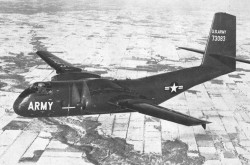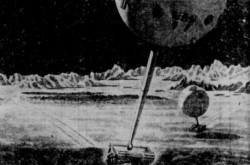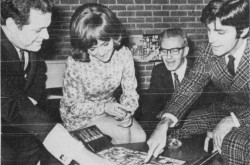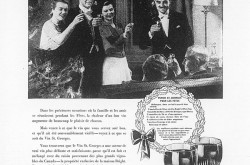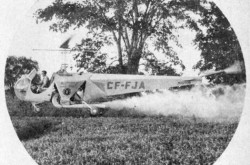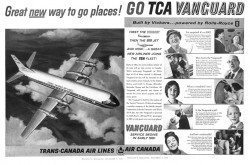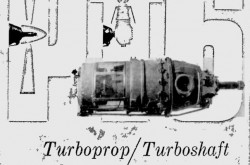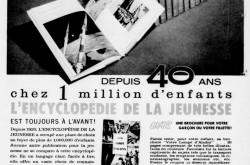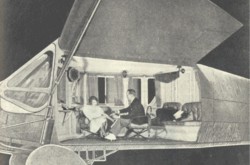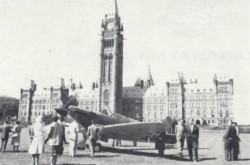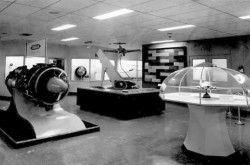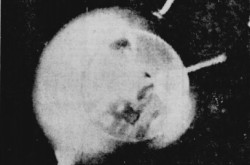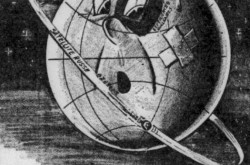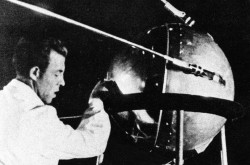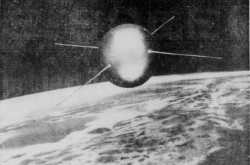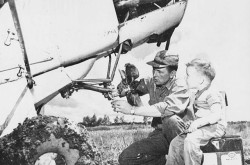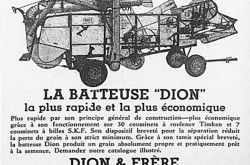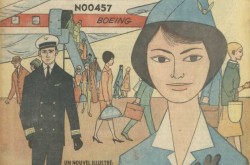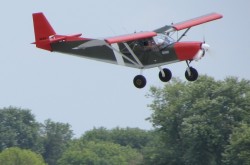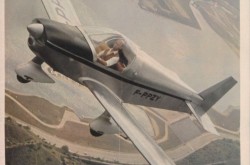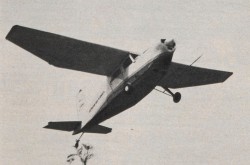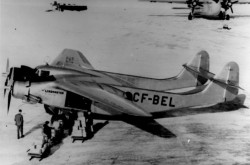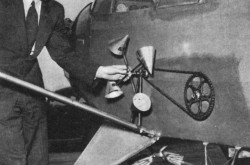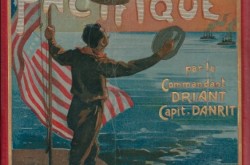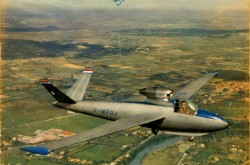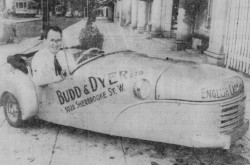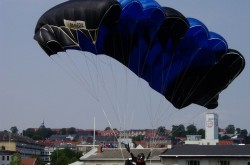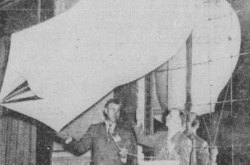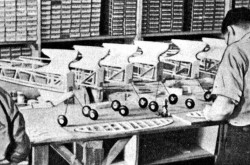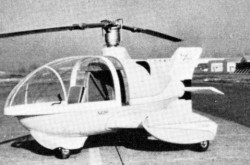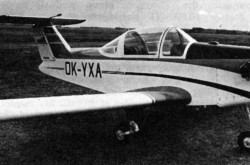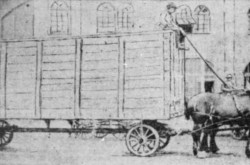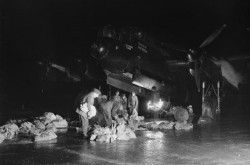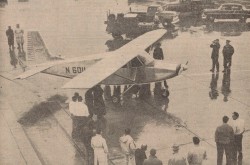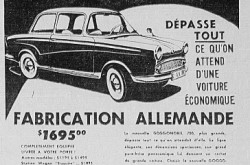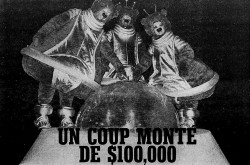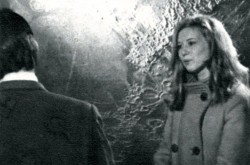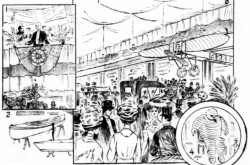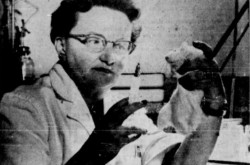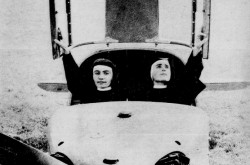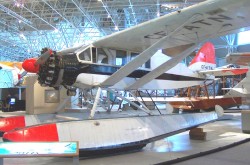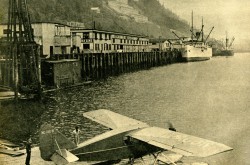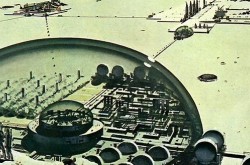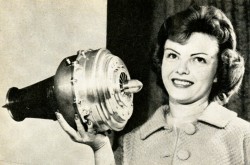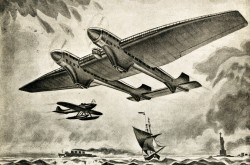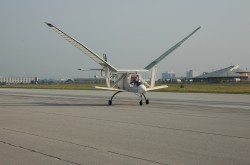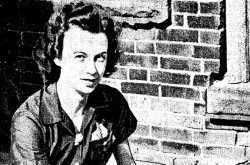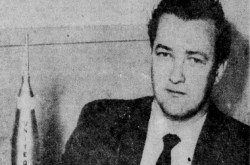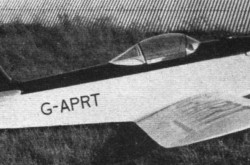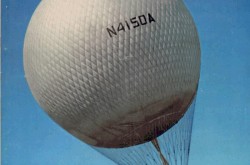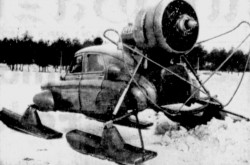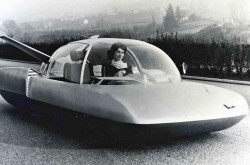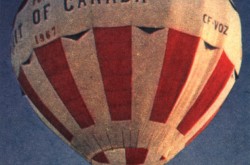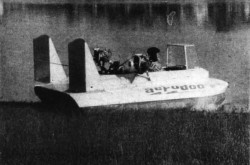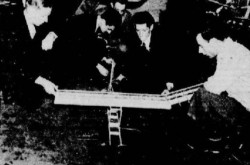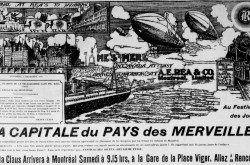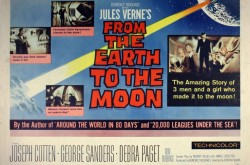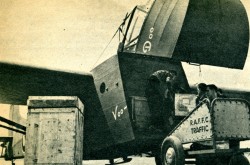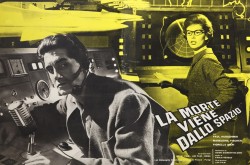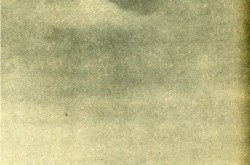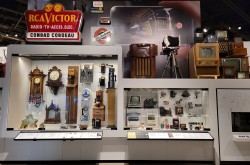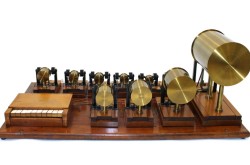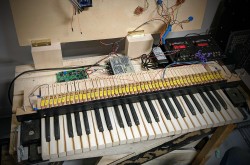One of the most fertile inventive minds at the dawn of the television age and one of the few African American pioneers of that technology, William Bundy Still, part 3
Hello there, my reading friend. To paraphrase the lead singer of the American new wave band Talking Heads, in its 1981 (!) hit song Once in a lifetime, you may ask yourself what a February 2013 photograph of a former club house of the Benevolent and Protective Order of Elks located in Brooklyn, one of the boroughs of New York City, New York, is doing in the 3rd part of this article on one of the most fertile inventive minds at the dawn of the television age and one of the few African American pioneers of that technology, William Bundy Still.
Incidentally, did you know that the Benevolent and Protective Order of Elks was one of the men-only fraternal organisations which was gently made fun of by the Loyal Order of Water Buffalos of the famous American animated situation comedy The Flintstones (1960-66)? A situation comedy delightfully dubbed in Québec in the 1970s as Les Pierrafeu, with Saint-Granite, Fred Caillou and the Ordre loyal des bisons des prairies taking the place of Bedrock, Fred Flintstone and the Loyal Order of Water Buffalos, and…
Fear not, my reading friend there is indeed method to my madness. Let me explain.
Still became involved in yet another venture no later than the spring of 1946. You see, in February of that year, a newly founded American firm based in New York City had acquired a large multistory building, a former clubhouse of the Benevolent and Protective Order of Elks if you must know, tadaa, in order to create the largest independent motion picture studio outside of Hollywood, California.
Lafayette Television and Motion Picture Studios Incorporated, which was formally incorporated only in late March by the way, intended to operate its own television broadcasting service and produce ready to use / canned television programs, and this on motion picture film. The potential content of its production would be commercial, educational, industrial and religious.
Would you believe that, around April 1946, J. Arthur Rank Company, arguably the largest and most vertically integrated motion picture firm in the United Kingdom entered into negotiations with Lafayette Television and Motion Picture Studios? That English conglomerate which owned film production, exhibition and distribution facilities as well as film production equipment manufacturing facilities was exploring the possibility of producing educational films for children in New York City.
Things were certainly looking up for Lafayette Television and Motion Picture Studios, were they not?
Still became Lafayette Television and Motion Picture Studios’ consulting electronics engineer in early April 1946. Rumours circulated as well that he would sell it some television production and transmission equipment, and this to the tune of US $ 55 000, a sum which corresponded to $ 1 275 000 or so in 2025 currency. Wah!
Was there some truth to the possibility that Still might have become interested in the new studio after the publication of a newspaper article, in March 1946, which stated that at least 3 films that Hollywood Pictures Corporation, a studio which produced motion pictures with African American casts, could not produce in California would be produced in the studio that Lafayette Television and Motion Picture Studios would inaugurate before the end of June? A good question. Somehow, I doubt it.
Incidentally, that deal was all the easier to conclude given the fact that the president of Hollywood Pictures, a former vaudeville performer by the name of Jack Goldberg, had very recently acquired an interest in Lafayette Television and Motion Picture Studios.
For some reason or other, the dreams of the people who had laboured to create Lafayette Television and Motion Picture Studios collapsed like a house of card even before the end of 1946.
Still’s saga did not end at that time, however. Nay. Still, a large and powerful gentleman sometimes described as the “John Henry-size Negro of television,” if one believed the American author / news commentator / director Richard Whittaker Hubbell, “Mr. Television” as this pioneer was sometimes called, founded Jamaica Television Manufacturing Company of… Jamaica, a neighbourhood / village located within Queens, a borough of New York City, at some point in the second half of the 1940s, as early as 1946, if not 1945 perhaps.
Before I forget, John Henry was a 19th century African American folk hero who gained fame for his ability to hammer steel drills into hard rock to make holes in which explosives were put and detonated to create railroad tunnels.
Before I forget, again, Still might have financed the fitting out of a new television studio near his older one, a studio completed at some point in 1946.
Sadly enough, the building which contained that studio was not air conditioned, which meant that, given the bright lights and all the equipment happily buzzing inside, things got pretty hot in there in the summertime – and the Flying Spaghetti monster knows that New York City summers could be very hot indeed. As a result, the large rollup door had to be kept open quite often, which made it possible for some curious youngsters to sneak inside once in a while.
Now, my reading friend, do you remember the New York City–based non-profit organisation dedicated to supporting excellence and education in theatre we came across earlier in this story? Yes, American Theatre Wing War Service Incorporated. Would you believe that this organisation seemingly contacted W2XJT at some point in early 1947, and this in order to launch another 10-week training program which included a practical course held in the station’s studio? That program began in late May.
It is worth noting that, no later than August 1947, W2XJT’s various efforts gave birth to an independent production entity. Indeed, from that time onwards, Telepax Company handled the entirety of the station’s programming, which consisted of at least 2 hours of broadcasting 3 nights a week until the end of the year. From January 1948 onward, Telepax’s team only broadcasted one night a week, however.
Said programming was not Telepax’s sole project, of course. The latter’s offer to publishing houses, television networks and what not was undoubtedly original. The payments made by its customers would be proportional to the increase in sales resulting from the television advertisements it would broadcast, in cooperation with W2XJT.
Most of the 30+ people involved in Telepax were showbusiness professionals who had joined the television industry via the training programs offered by… American Theatre Wing War Service. Those people included Clay Yurdin, a former dialog director at Columbia Pictures Corporation, an important American film production / distribution firm, as well as Leonard Blair, a former staff director at American Broadcasting Company, one of the most important radio broadcasting firms in the United States.
By the looks of it, Telepax went under a few years after its creation. A television program called Telepax News might, I repeat might, have been produced by Telepax in 1950-51.
One of the Telepax shows broadcasted by W2XJT was a series of sewing instructions vignettes sponsored by the Jamaica outlet of a well-known American firm, Singer Manufacturing Company.
Speaking (typing?) of sewing instructions vignettes, yours truly distinctly remembers the devotion with which my late mom watched one and / or two of the 1970s television series which starred Québec’s grand lady of sewing, Angelina Di Bello, born Torrito-Ravenda.
A brief aeronautical digression if I may.
In 1941, one of the largest, if not the largest manufacturer of railway rolling stock in Canada, Canadian Car & Foundry Company Limited (CCF) of Montréal, Québec, and elsewhere in Canada, a firm mentioned several / many times in our blog / bulletin / thingee since May 2019, began to produce propellers. It had acquired the license of a two-blade propeller from Walter Scott Hoover, an American engineer who was seemingly not related to the people who ran an American home appliance giant, Hoover Company.
CCF assembled the mechanisms manufactured in one of its factories, in Montréal, and added to it blades made of aluminum and, later on, wood, blades which were made elsewhere. The wooden blades were produced by Singer Manufacturing Company Limited, the Canadian subsidiary of, you guessed it, Singer Manufacturing, and this at its factory in Thurso, Québec.
Used during the Second World War, on advanced training aircraft operated by the Royal Canadian Air Force (RCAF), as part of the British Commonwealth Air Training Plan, the Hoover propeller may unfortunately not have been completely reliable.
Mind you, Singer Manufacturing also produced wooden blades mounted on propellers designed and manufactured by the English firm Rotol Airscrews Limited. Those propellers were themselves mounted on Hawker Hurricane fighter planes built by CCF in Fort William, Ontario, now part of Thunder Bay, and subsequently delivered to the RCAF and, perhaps, the Royal Air Force.
Incidentally, Rotol Airscrews was incorporated in May 1937 by the largest aeroengine makers in the United Kingdom, Rolls-Royce Limited and Bristol Aeroplane Company Limited, to develop and produce the Hele-Shaw Beacham variable pitch propeller design they had both been experimenting with.
The project was originally the brainchild of one of the most brilliant engine designers of the age, Albert Hubert Roy Fedden of Bristol Aeroplane. Intrigued by the performance of the Hele-Shaw Beacham propeller, Fedden had been able to engineer the purchase of its design and manufacturing rights from its owner, a major British aircraft maker, Hawker Aircraft Limited, which had taken control of the rights from their original owner, Gloster Aircraft Company Limited, those two firms being subsidiaries of a British aeronautical giant, Hawker Siddeley Aircraft Company Limited.
Incidentally, again, Rotol Airscrews’ name was an acronym, with the Ro coming from Rolls-Royce and the tol from Bristol, coined by the wife of the new firm’s general manager.
Would you tolerate a digression within this digression, my ever so tolerant reading friend? No? Too bad, so sad.
Although flight tested as early as 1928 by Gloster Aircraft, the British Hele-Shaw Beacham variable pitch propeller, developed by an English engineer / professor, Henry Selby Hele-Shaw, and another English engineer, Thomas Edward Beacham, received little support from the British authorities until the second half of the 1930s.
Gloster Aircraft or, as it was known the time, Gloucestershire Aircraft Company Limited was the only British aircraft making firm to show much interest. Indeed, it bought the design and manufacturing rights of the Hele-Shaw Beacham propeller in 1926.
Interestingly, it has been suggested that Thomas Foster Hamilton, the boss of Hamilton Aero Manufacturing Company, a subsidiary of the American conglomerate United Aircraft and Transport Corporation, was most impressed by a Hele-Shaw Beacham propeller that he saw in the Gloster Aircraft stand at the International Aero Exhibition held in London, England, in July 1929. This interest might, I repeat might, have played some small part in launching the research project which led to the creation of the world-famous Hamilton Standard variable pitch propeller, in 1932.
A variable pitch / controllable pitch propeller, by the way, includes a means of rotating its blades in mid-air, thus changing their angle and giving pilots the thrust required for take-off and high speed flight.
On take-off, the blade angle is small, which means that the distance traveled with each rotation of the propeller, its bite of the air so to speak, is also small. This is referred to as low / flat / fine pitch. The increased grip of the propeller and its higher rotation speed improve the takeoff and climb performance of an aircraft. By contrast, for level flight, the propeller has to travel a greater distance with each revolution. To achieve this, the pilot increases the angle of the blades. This is referred to as high / coarse pitch.
And now, here is the inevitable information on previous mentions of the names of the aforementioned firms in our glorious blog / bulletin / thingee:
- Bristol Aeroplane, many times since June 2018,
- Gloster Aircraft, once, in February 2022,
- Hamilton Aero Manufacturing, twice, in April 2018 and September 2023,
- Hawker Aircraft, twice, in February 2019 and June 2021,
- Hawker Siddeley Aircraft, many times since May 2018,
- Rolls-Royce, many times since April 2018,
- Rotol Airscrews, once, in December 2022, and
- United Aircraft and Transport Corporation, once, in September 2023.
Sorry about that, but rules are rules and tradition is tradition.
Now, do you know which internationally known aviation museum has a Hurricane in its collection? The Canada Aviation and Space Museum in Ottawa, Ontario, you say? Good answer. End of digression.
One of the more intriguing projects Still and Jamaica Radio Television dealt with in 1947 involved the fabrication and installation of television equipment in a branch of the Franklin Square National Bank located in the town of Hempstead, New York. This work was seemingly completed during the fall.
That equipment consisted of a television camera mounted in a cashier’s cage and a television set mounted in the bookkeeping department. Combined with a signals system, the equipment was used to check the validity of documents almost instantaneously.
An even more interesting activity concerned a show broadcasted by W2XJT in 1947. That show was a 4-part local talent show sponsored by a New York City automobile dealer which sold vehicles produced by Kaiser-Frazer Corporation. That series proved so successful that DuMont Television Network Incorporated, a television network owned by Allen B. DuMont Laboratories Incorporated, an American form, err, firm, sorry, mentioned in the 2nd part of this article, decided to turn it into a televised version of a very successful radio show, Original Amateur Hour, hosted by the American host (radio and television) / musician / talent scout Ted Mack, born William Edward Maguiness.
Original Amateur Hour, yes, the televised version, hit the airwaves in January 1948, with Mack as its host and Kaiser-Frazer as its sponsor.
Would you believe that Ted Mack and the Original Amateur Hour left the airwaves in September 1970, or that Mack was its regular host until that date? Wah! At the time, the show was broadcasted by Columbia Broadcasting System Incorporated, one of the most important television broadcasting firms in the United States, but back to Still and W2XJT.
The arguably quite colourful saga of W2XJT, an efficient little station if there was one, came to a close in the spring of 1948.
That final chapter had begun in late April 1947 when the Federal Communications Commission (FCC) gave its blessing to a request submitted by an American radio broadcasting firm, Bremer Broadcasting Corporation, to operate a commercial television station, WATV, which would be accessed by turning the dial knob of a television set to position 13, then occupied by W2XJT.
Yours truly does not know when Still was informed of that decision. Even though he was officially notified by the FCC to vacate Channel 13 in early March 1948, Still probably knew the jigs was up as early as the spring of 1947. The time for experimental television stations was coming to an end.
As you know very well, American television was pretty much lily white during the 1950s, and this both on screen and off screen.
WATV personnel began to broadcast test patterns in early March 1948. It went on the air in mid-May.
W2XJT’s disappearance from the airwaves did not prevent that experimental station from cooperating yet again with American Theatre Wing War Service. The first class of their 1948 10-week experimental television writing, producing and directing workshop, done over the station’s closed channel facilities, took place in early July. The first class of a similar workshop took place in March 1949.
Even though W2XJT had disappeared from the airwaves, Jamaica Television Manufacturing was still active. Now, my reading friend, would you like to know what types of television sets that firm was producing at least in part in, let us say (type?), 1948? Yes?! Wunderbar.
The Model 63 table television set had a 25 or so centimetre (10 or so inches) picture tube and a 12-channel dial. It cost US $ 329.50 or US $ 397, installation included.
The Model B150 table television set had a 41 or so centimetre (16 or so inches) picture tube and a 11-channel dial. It cost US $ 445 or US $ 517, installation included.
The Model RTD console television set with an integrated television set and record player, I think, had a 25 or so centimetre (10 or so inches) picture tube and a 11-channel dial. It cost US $ 449.50 or US $ 521.50, installation included.
By the way, those sums corresponded to the following amounts in 2025 currency:
Model 63 $ 6 200 or so and $ 7 450 or so
Model B150 $ 8 350 or so and $ 9 725 or so
Model RTD $ 8 450 or so and $ 9 800 or so
Wah!
These days, yours truly could get a trio of low end 2.49 or so metre (98 or so inches) big screen television sets for that kind on moolah, and still have enough dough left to buy some furniture to go with them.
Before I forget, Jamaica Television Manufacturing might have sold television sets made by other firms, as can be ascertained from the following advertisement.

An advertisement issued by Archer Clothes (Incorporated?) of New York City, New York, for a contest which included as prizes 5 television sets made by the American firm Telco Television Incorporated of New York City. Anon., “Archer Clothes (Incorporated?).” Sunday News, 18 September 1949, Q15.
Would you believe that Still apparently conducted experiments with colour television? He was to conduct that work with the approval and maternal / paternal interest of the aforementioned FCC, a double blessing given no later than late July 1948. The work was scheduled to start in September, I think.
Mind you, Still would also look into the possibility of reducing the bandwidth of his signals so that up to 5 stations could occupy the space then occupied by only one, a change which might prove very handy given the likely increase in the number of television stations during the 1950s.
And yes, my reading friend, Still might have gotten that green light as a result of prior experiments conducted privately.
At the time, yes, in July 1948, Still was supervising the construction of a new building somewhere in New York Citty to conduct the required work. Mind you, again, Still was also supervising the construction of a space for an FM radio station he planned to set up.
Yours truly has so far been unable to figure what Still was up after 1948-49. Jamaica Television Manufacturing might, I repeat might, have gone under in 1952, however. In any event, Still lived in Windsor, Ontario, for some time.
In that regard, it is worth noting that, in late March 1953, the board of governors of the Canadian Broadcasting Corporation (CBC), a grand institution well worth preserving mentioned on moult occasion in our blog / bulletin / thingee, and this since September 2018… Err, where was I? Oh yes.
In that regard, again, it is worth noting that, in late March 1953, the board of governors of the CBC approved the application submitted in early March by Western Ontario Broadcasting Company Limited of Windsor for the creation of that city’s first television station. CKLW went on the air in mid-September 1954.
At some point, Still moved to Québec, presumably in the greater Montréal region. Indeed, he launched Still Electronics Company Limited of Montréal no later than January 1955.
And yes, my reading friend, the moment has now come to look into the story gravitating around the photographs with which we began this issue of our stupendous blog / bulletin / thingee, and…
You have forgotten all about those photographs and the story around them, now do you not, my reading friend with attention span of a flea? Sigh…Well, please find enclosed said photographs…

Two photographs showing the television set that William Bundy Still had placed in his station wagon, Montréal, Québec. Still was on the left side of the right hand image. Arthur Prévost, “On peut maintenant voir la TV en auto.” Le Petit Journal, 20 March 1955, 40.
The television set, presumably designed and made by Still himself, could be in the front or rear of the vehicle. When Arthur Prévost, the journalist from the Montréal weekly newspaper Le Petit Journal who interviewed Still, dropped in, in March 1955, that television set was affixed to the roof of the cabin of Still’s station wagon, just over the rear seat. The various controls were mounted in the back of the vehicle’s middle seat.
That installation might not have been what Still had in mind if some sort of limited production was to follow. He seemed to be of the opinion that its 36 or so centimetre (14 or so inches) screen was a tad too large. An 18 to 25 or so centimetre (7 to 10 or so inches) screen would be more appropriate in the confined space of a motor vehicle. Indeed, Still seemingly had two concepts in mind, if some sort of limited production was to follow.
The television set could either have been mounted like your typical 2025 television set, with its screen placed vertically, or like some television sets of the 1930s (and 1940s?) whose screen faced upwards. Yes, yes, upwards. A mirror placed at a 45 or so degree angle would have allowed the passengers of the vehicle to watch whatever show happened to be broadcasted.
The former was to be mounted on the back of the front seat whereas the latter was to be installed in the trunk of the automobile. The mirror which would have allowed the passengers to watch the shows was to be placed on the back of the driver’s seat.
Those television sets could have been used in a variety of vehicles, from taxicabs and trucks to private automobiles and police cars.
In any event, the television set was installed in such a way that it could have been turned on only when the automobile which contained it was standing still with brakes applied.
Still stated that one of his television sets would cost about $ 500, a sum which corresponded to $ 5 775 or so in 2025 currency. Wah!
Incidentally, Still had been working on that new version of his automobile television set since 1953.
Still claimed that the television set he had in his station wagon allowed him to easily watch television shows broadcasted from as far from Montréal as Mount Washington, in New Hampshire, where one could find the antenna of station WMTW of Poland Spring, Maine. Incidentally, the distance between the highest peak of the Presidential mountain range and the metropolis of Québec / Canada exceeded 300 kilometres (190 or so miles).
Prévost was of course mentioned several times, and this since May 2019, in our blog / bulletin / thingee.
Around mid-February 1959, Still Electronics had to declare bankruptcy. Its main creditor, Canadian Electrical Supply Company Limited of Montréal, saw to it that most of Still’s belongings were sold at auction in early September of that year.
You will of course remember that Canadian Electrical Supply was mentioned in the 1st part of this article.
As of late November 1962, Still was the chief engineer at a television station whose studio was located in Cornwall, Ontario. At the time, CJSS was jointly owned by Beaver Film Productions Limited of Toronto, Ontario; Bushnell TV Company Limited of Ottawa, Ontario; Canadian Marconi Company Limited of Montréal; and Granada Television Network Limited of London. Yes, yes, of London.
CJSS operated independently between October 1959 and December 1962, I think, when that station became a broadcast relay station / re-broadcaster of CJOH, a television station based in Ottawa which belonged to Bushnell TV.
And yes, my knowledgeable reading friend, Canadian Marconi was indeed a subsidiary of an English firm, Marconi Company, which was itself a subsidiary of another English firm, English Electric Company Limited.
Incidentally, Canadian Marconi was mentioned in several issues of our equally knowledgeable blog / bulletin / thingee, and this since October 2020, whereas English electric was similarly blessed in December 2020 and February 2021.
Still could still be found in the greater Montréal area as late as 1964. Indeed, he bought a piece of land in Dollard-des-Ormeaux, Québec, near Montréal in April of that year.
Yours truly has so far been unable to figure out what happened later on to Still who, let us not forget, was not yet 48 years old in April 1964. That is most unfortunate. I do know, however, that Still left this world in late December 1993, in Pointe-Claire, Québec, not too far from Montréal. He was 77 years old.
And it is with this sad note that this article comes an end.
This writer wishes to thank the people who provided information. Any mistake contained in this article is my fault, not theirs.






































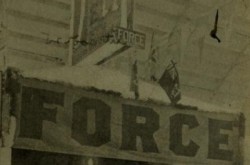
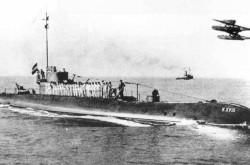
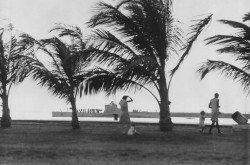
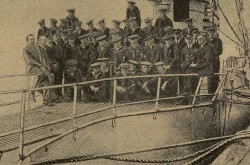
![A block of photographs showing some of the people involved in the bombing of beluga whales in the estuary and gulf of the St. Lawrence River. Anon., “La chasse aux marsouins [sic]. » Le Devoir, 15 August 1929, 6.](/sites/default/files/styles/thumbnail_7/public/2024-09/Le%20Devoir%2015%20aout%201929%20page%206.jpg?h=584f1d27&itok=TppdLItg)

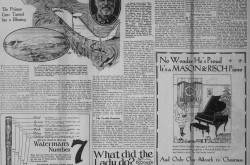

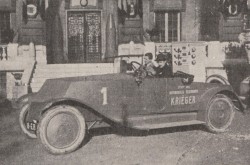
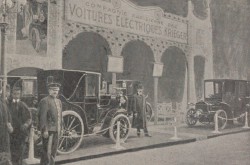

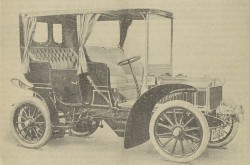

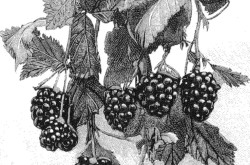
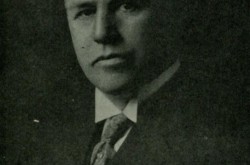
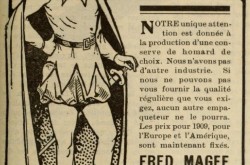
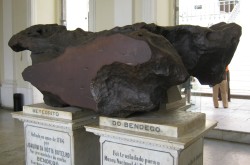
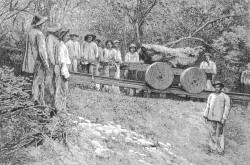
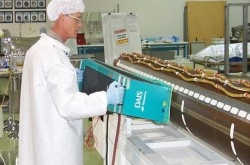
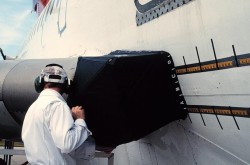
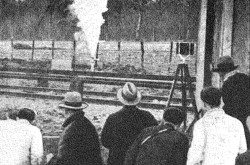
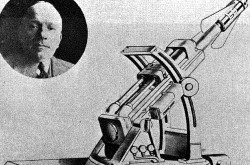
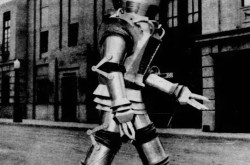

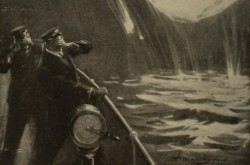
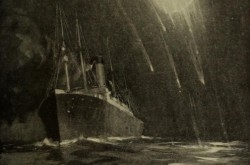
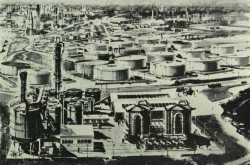
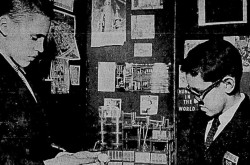
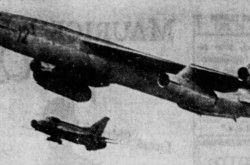
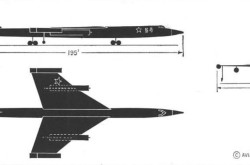
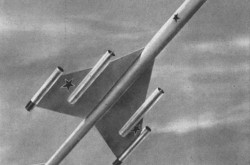

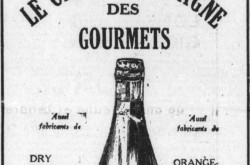
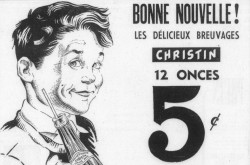

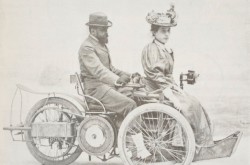
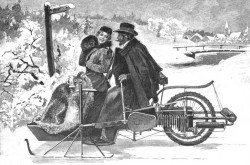

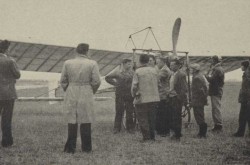
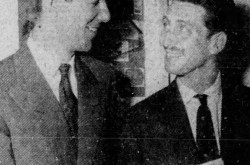
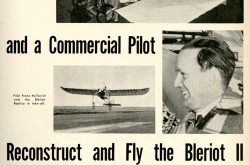
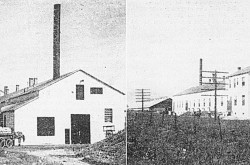

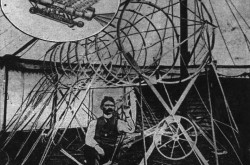

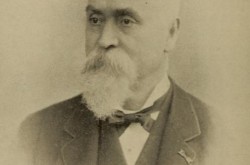
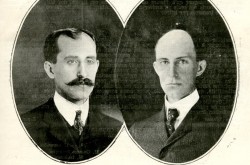
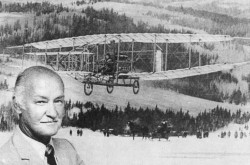
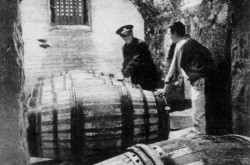
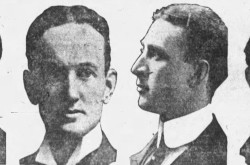
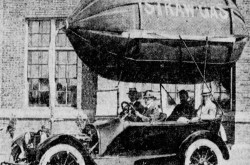

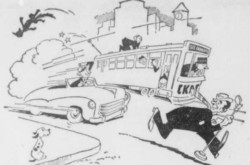
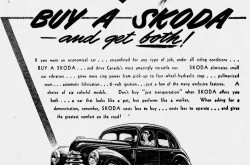
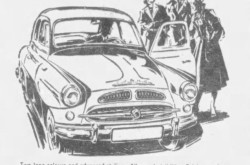
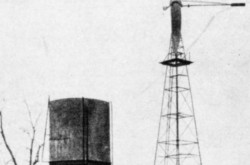
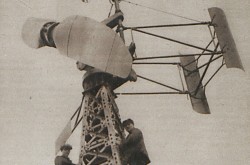
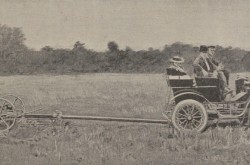

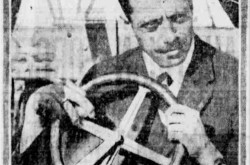

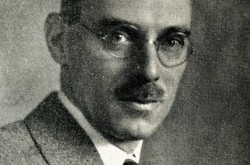
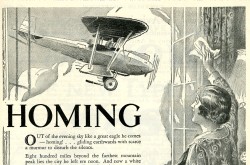

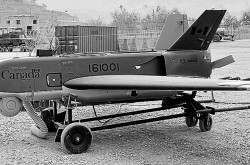


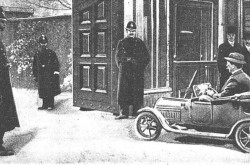
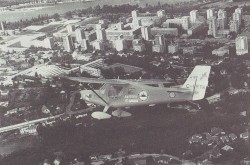
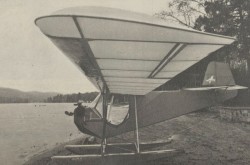
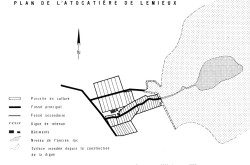

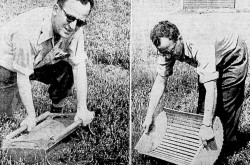
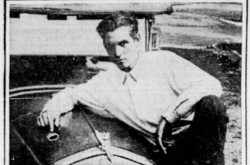
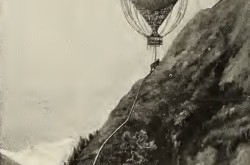


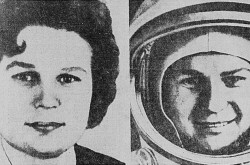
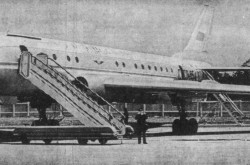
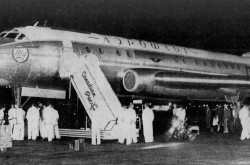
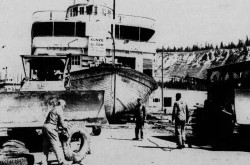
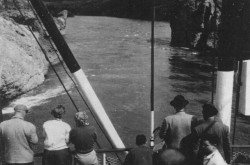
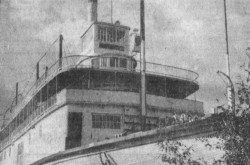
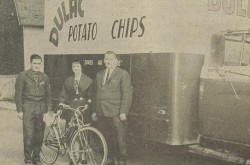
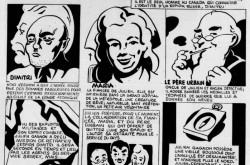
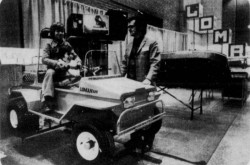

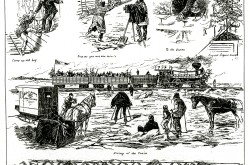
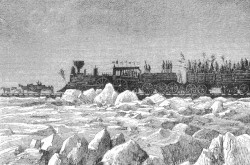
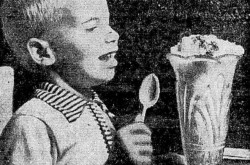
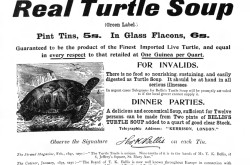

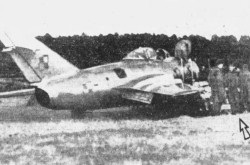
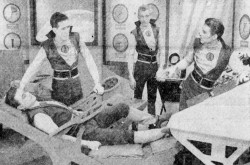

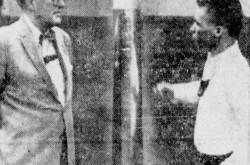


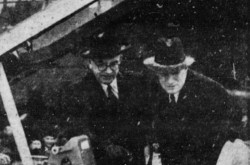
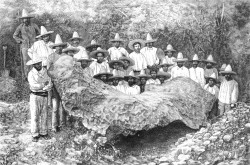
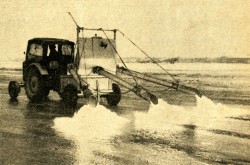

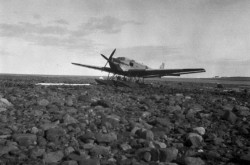

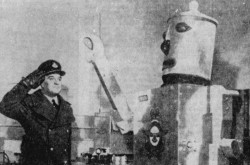
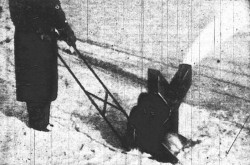


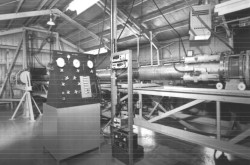

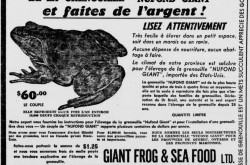
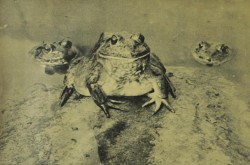

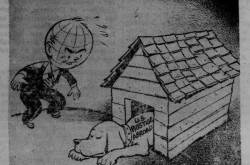
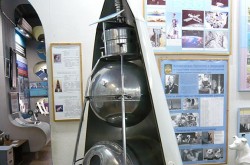



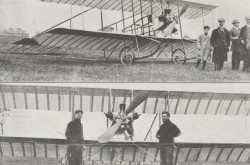


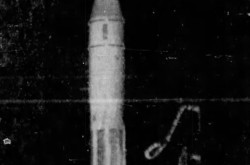
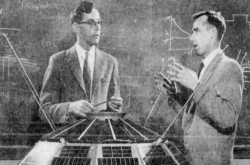
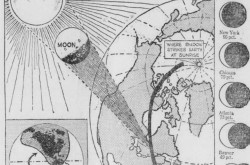

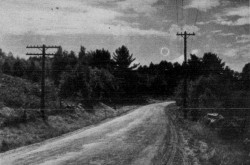





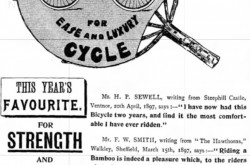
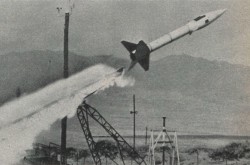
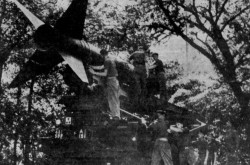
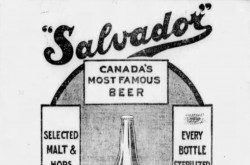
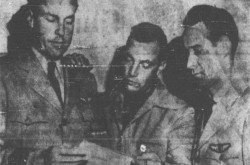
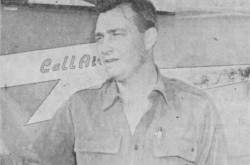
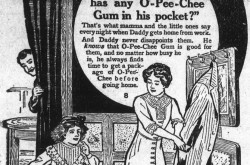

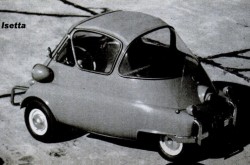
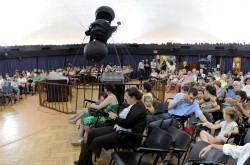
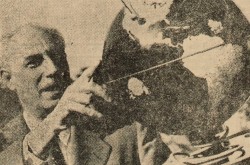
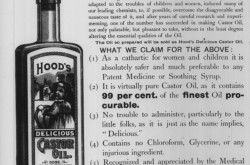
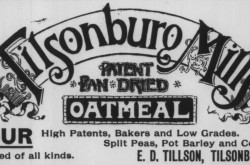



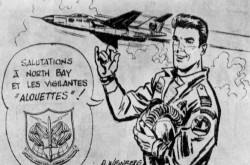
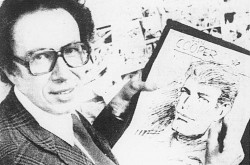
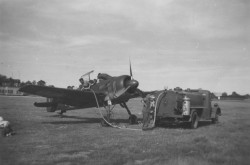

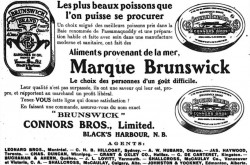
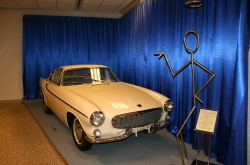

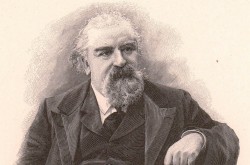


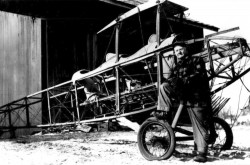

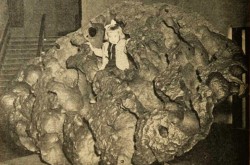
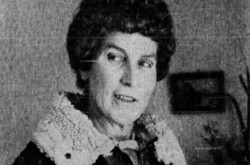

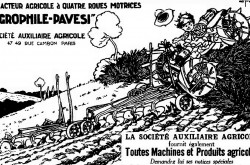
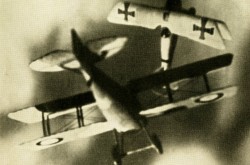

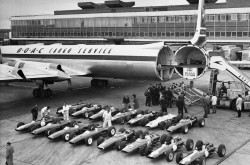
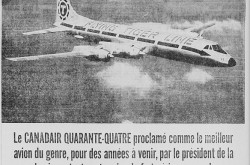


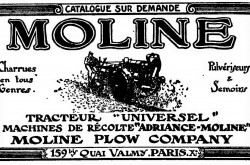
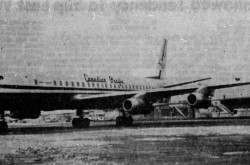
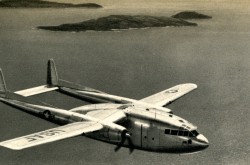
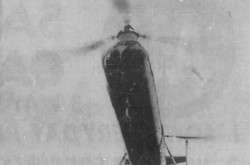

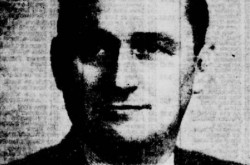
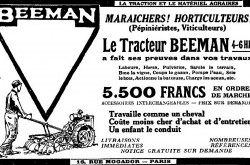
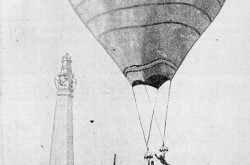

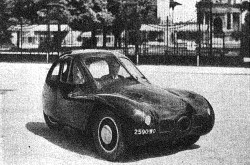
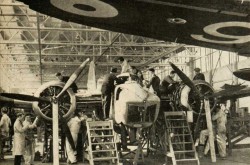


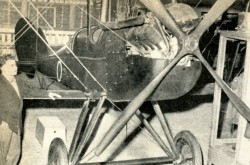
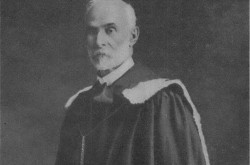
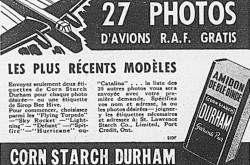
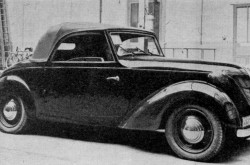

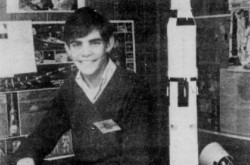

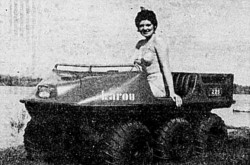
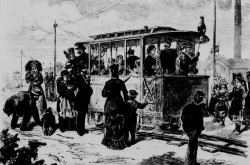
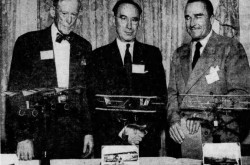
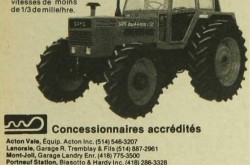



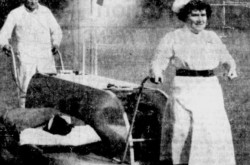

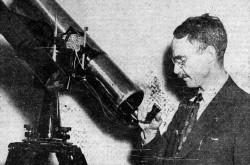

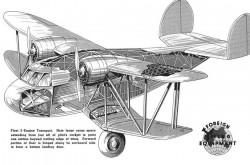
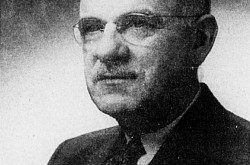
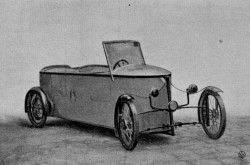

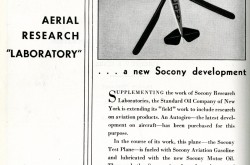

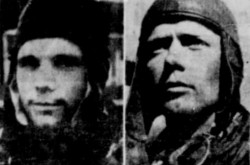
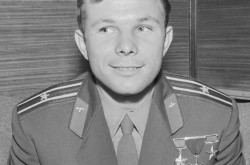

![Peter Müller at the controls [sic] of the Pedroplan, Berlin, Germany, March 1931. Anon., “Cologne contre Marseille – Le mystère du ‘Pédroplan.’ [sic]” Les Ailes, 2 April 1931, 14.](/sites/default/files/styles/thumbnail_7/public/2021-04/Les%20Ailes%202%20avril%201931%20version%20big.jpg?h=eafd0ed4&itok=WnBZ5gMf)
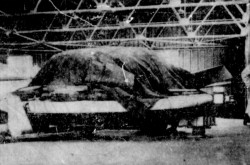
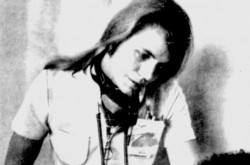
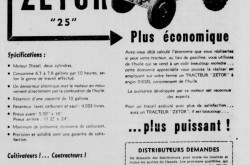
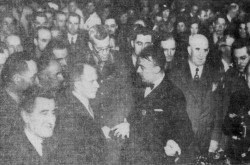
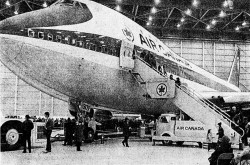
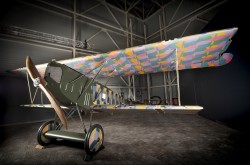

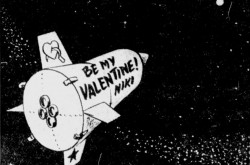
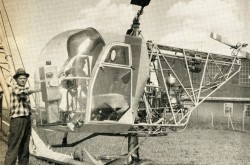

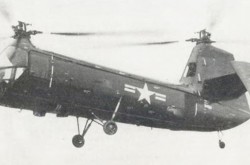
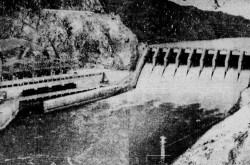
![One of the first de Havilland Canada Chipmunk imported to the United Kingdom. Anon., “De Havilland [Canada] DHC-1 ‘Chipmunk.’” Aviation Magazine, 1 January 1951, cover.](/sites/default/files/styles/thumbnail_7/public/2021-01/Aviation%20magazine%201er%20janvier%201951%20version%202.jpg?h=2f876e0f&itok=DM4JHe5C)
